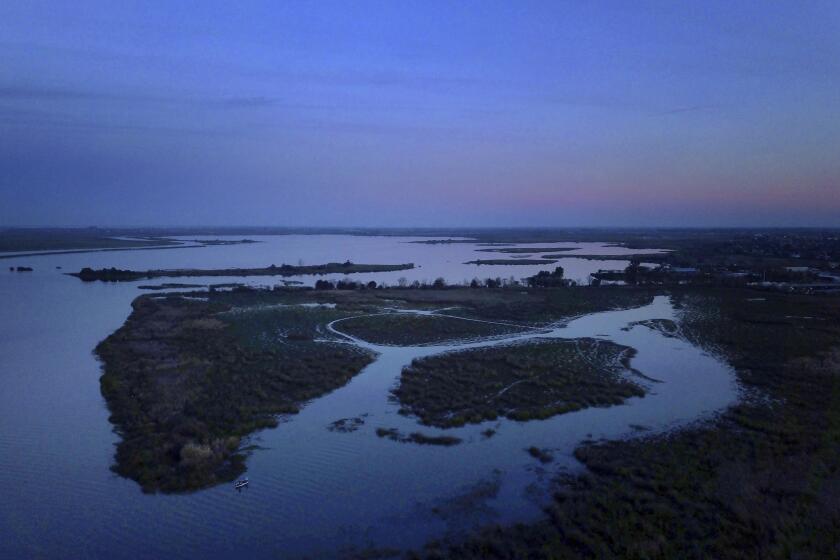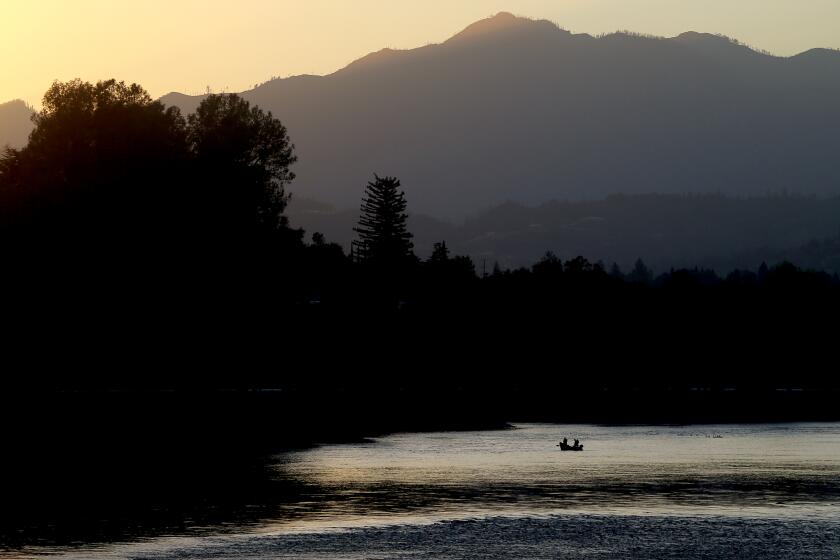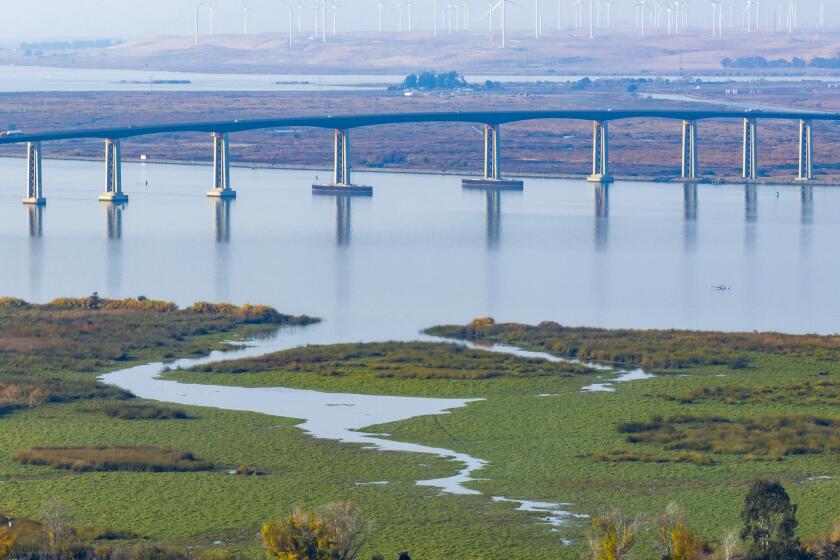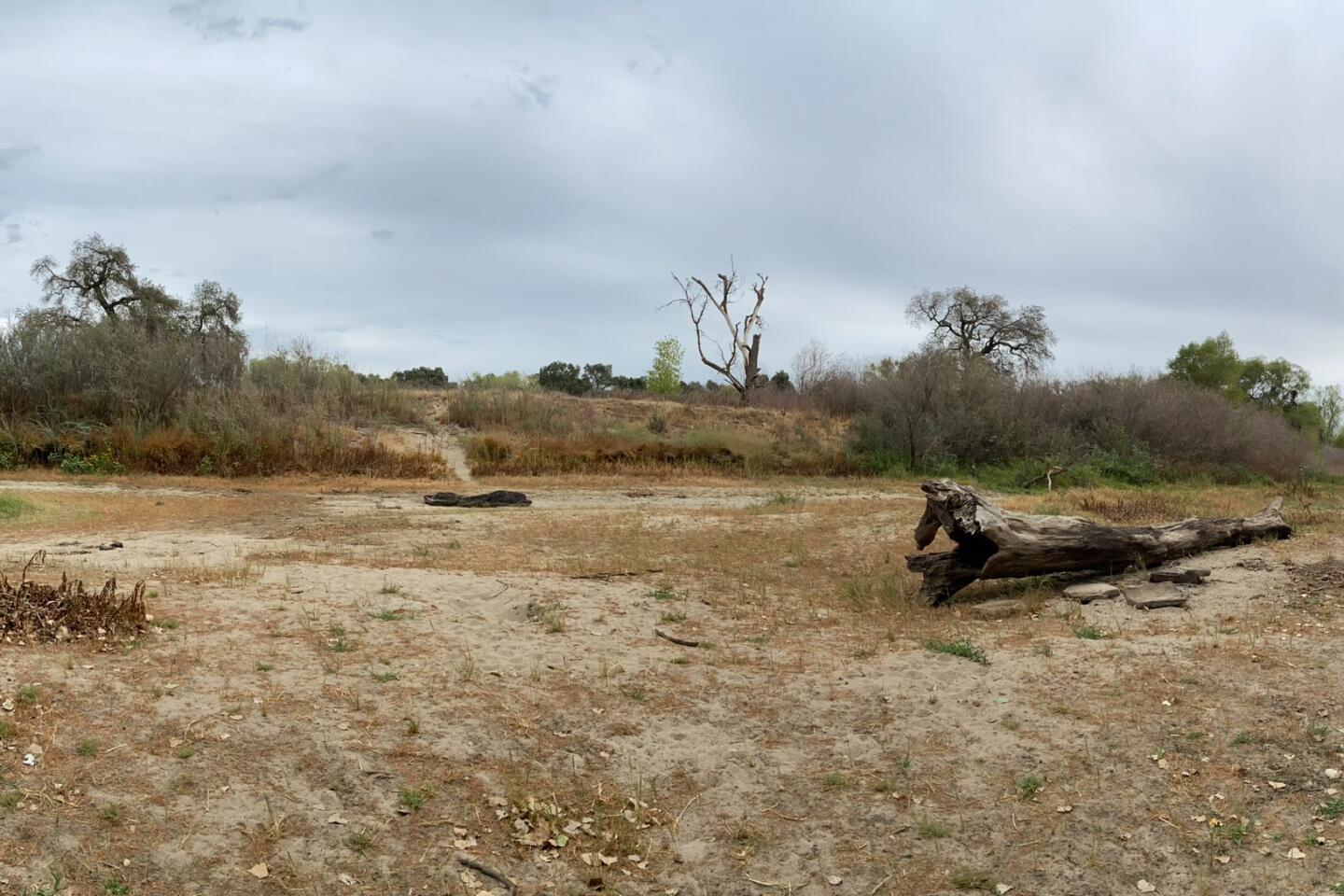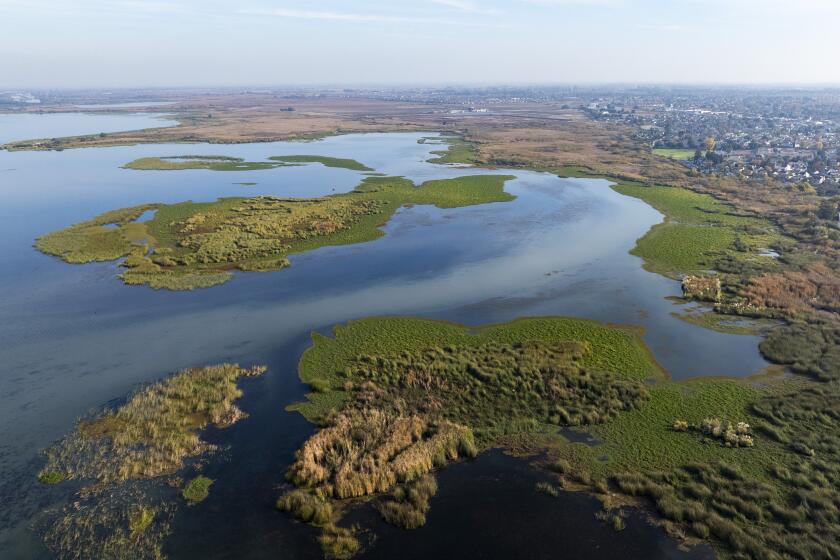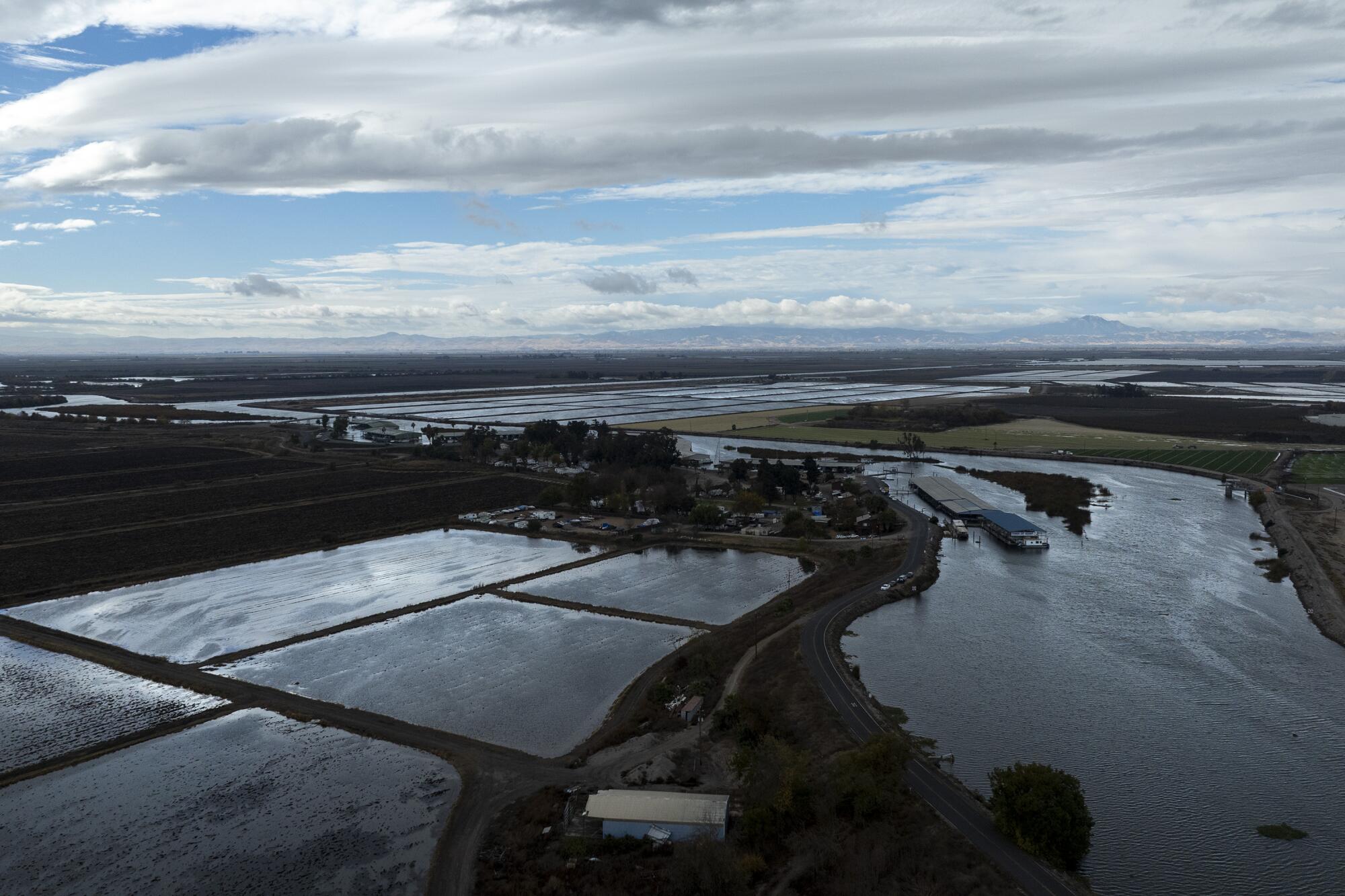
- Share via
A court has upheld a key decision by California’s water board calling for reductions in water diversions from the San Joaquin River and its tributaries to help revive struggling fish populations.
In his ruling, Sacramento County Superior Court Judge Stephen Acquisto rejected lawsuits by water districts serving farms and cities that would be required to take less water under the standards adopted by regulators. The judge also rejected challenges by environmental groups that had argued for requiring larger cutbacks to boost river flows.
The judge’s ruling, issued in a 162-page order last week, supports the State Water Resources Control Board’s 2018 adoption of a water quality plan for the lower San Joaquin River and its three major tributaries — the Tuolumne, Merced and Stanislaus rivers.
The water quality standards, which focus on a portion of the Sacramento-San Joaquin River Delta watershed, set goals for increasing river flows to help populations of chinook salmon and steelhead trout, which have declined dramatically.
“The decision is significant because it reaffirms the board’s authority to exercise both water rights and water quality authority to protect native fishes, and to help restore flows that are necessary for native fish,” said Michael Lauffer, chief counsel for the state water board.
Aggressive and impactful reporting on climate change, the environment, health and science.
Agencies that had sought to challenge the state’s plan included large agricultural suppliers such as the Merced Irrigation District and Westlands Water District, as well as urban suppliers such as the San Francisco Public Utilities Commission and the city of Modesto.
The decision provides legal backing for California’s water board to finalize rules requiring that more water be left in the Merced, Tuolumne and Stanislaus rivers for fish and the ecosystem. Environmental groups have argued that while more water in the rivers is urgently needed, the state’s plan doesn’t go far enough to protect salmon and other fish.
Currently, more than 80% of the rivers’ flows are diverted at times to supply farms and communities, leaving less than 20% of the natural flows in the rivers, Lauffer said. Once the standards are implemented, he said, the state board’s plan calls for limiting diversions during certain times of year to between 50% and 70% of total river flows — with the goal in the middle of that range.
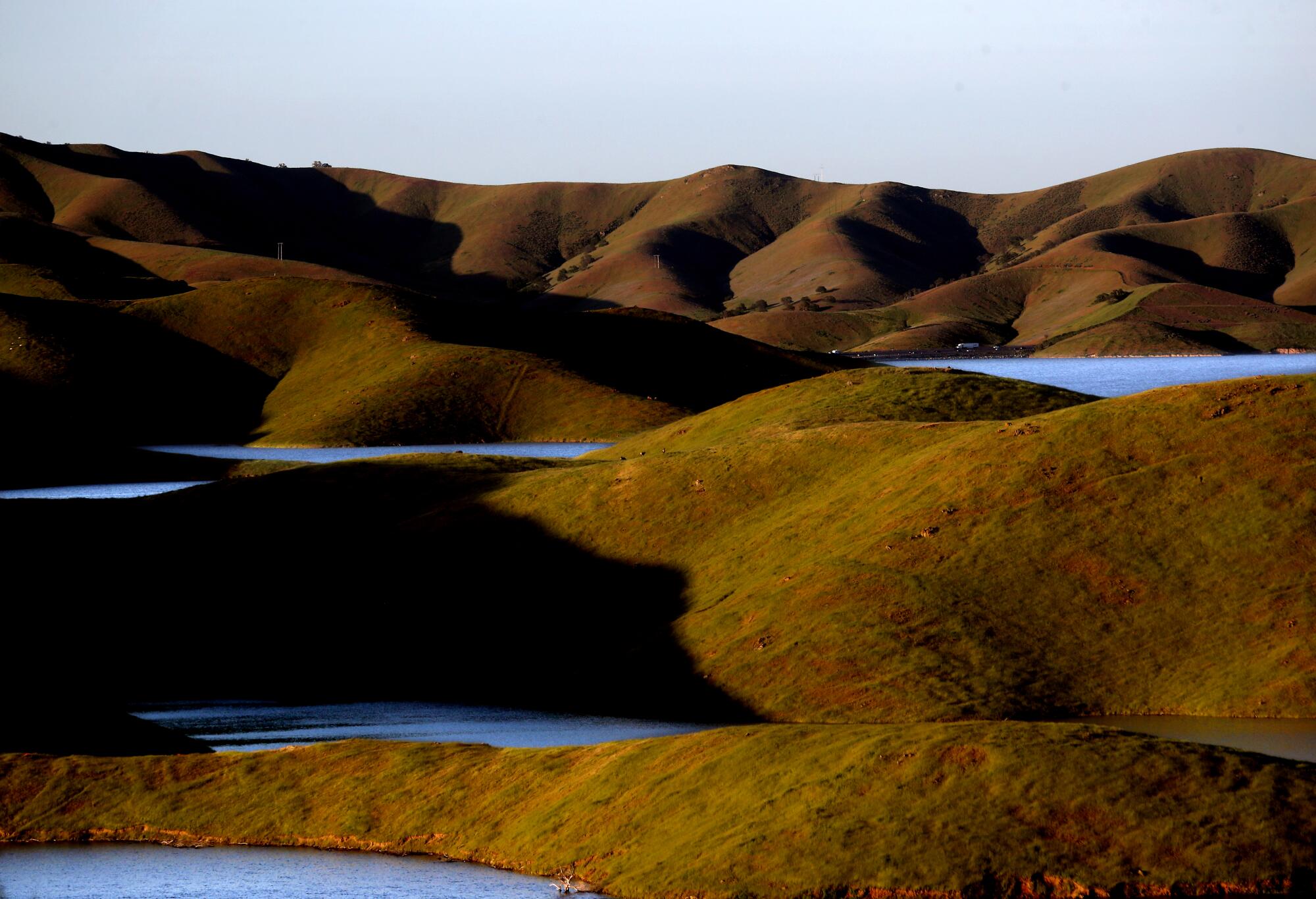
State officials have for years been engaged in the complex process of developing updates to the water quality plan for San Francisco Bay and the Sacramento-San Joaquin River Delta. It took nine years of studies and deliberations before the state water board adopted the standards for the tributaries along the San Joaquin River.
State officials are considering options for updating standards for the Sacramento River and the rest of the delta watershed.
“These are incredibly challenging science, legal and policy issues,” Lauffer said. “This decision is important, though, because it shows that despite those challenges, when the board moves forward, carefully considers the science, carefully considers the overall legal framework, it can exercise its authority in a reasonable way to improve water flows and improve conditions so that we can reverse the precipitous decline of the delta.”
California officials analyzed options for new water rules in the Sacramento-San Joaquin Delta. Water suppliers and environmental groups are sharply divided.
The judge noted in his ruling that the goals under the state-approved plan provide for increased flows downstream from dams on each of the tributaries to help protect fish populations.
“With more water being released into the tributaries and required to remain in the rivers to support the ecosystem for these fish populations, there will be less water available for diversion” to supply farms and cities, the judge wrote.
While most of the plaintiffs sued in 2019 to challenge the state standards for river flows, some water agencies in the delta also sought to challenge a provision governing salinity levels. And the federal government, which initiated its suit during the Trump administration, argued that the state board hadn’t complied with requirements of the California Environmental Quality Act.
The judge disagreed, rejecting a total of 12 lawsuits and 116 claims. The court ruled that the state water board complied with its obligations under state laws — one of which is the Porter-Cologne Act, the state’s water quality law.
Appeals are expected in the case, Lauffer said. “I think we all recognize that ultimately the courts of appeal or the California Supreme Court will resolve some of these issues.”
The state water board has yet to implement the water quality standards for the San Joaquin River. As an initial step, the board adopted biological goals last year that will guide the implementation effort, which will also determine how the reductions will affect each water user.
“Ultimately, as additional flows are left in the river for the benefit of fish and for the ecosystem, it will require belt tightening around the bay-delta watershed,” Lauffer said. “Unfortunately, the processes in California water quality and water rights law are not quick. We are still likely more than a year away from final actions that would see increases in the flows in these tributaries.”
Felicia Marcus, who oversaw the plan’s adoption in 2018 as chair of the state water board, said she is pleased the court supported the board’s decision and approach.
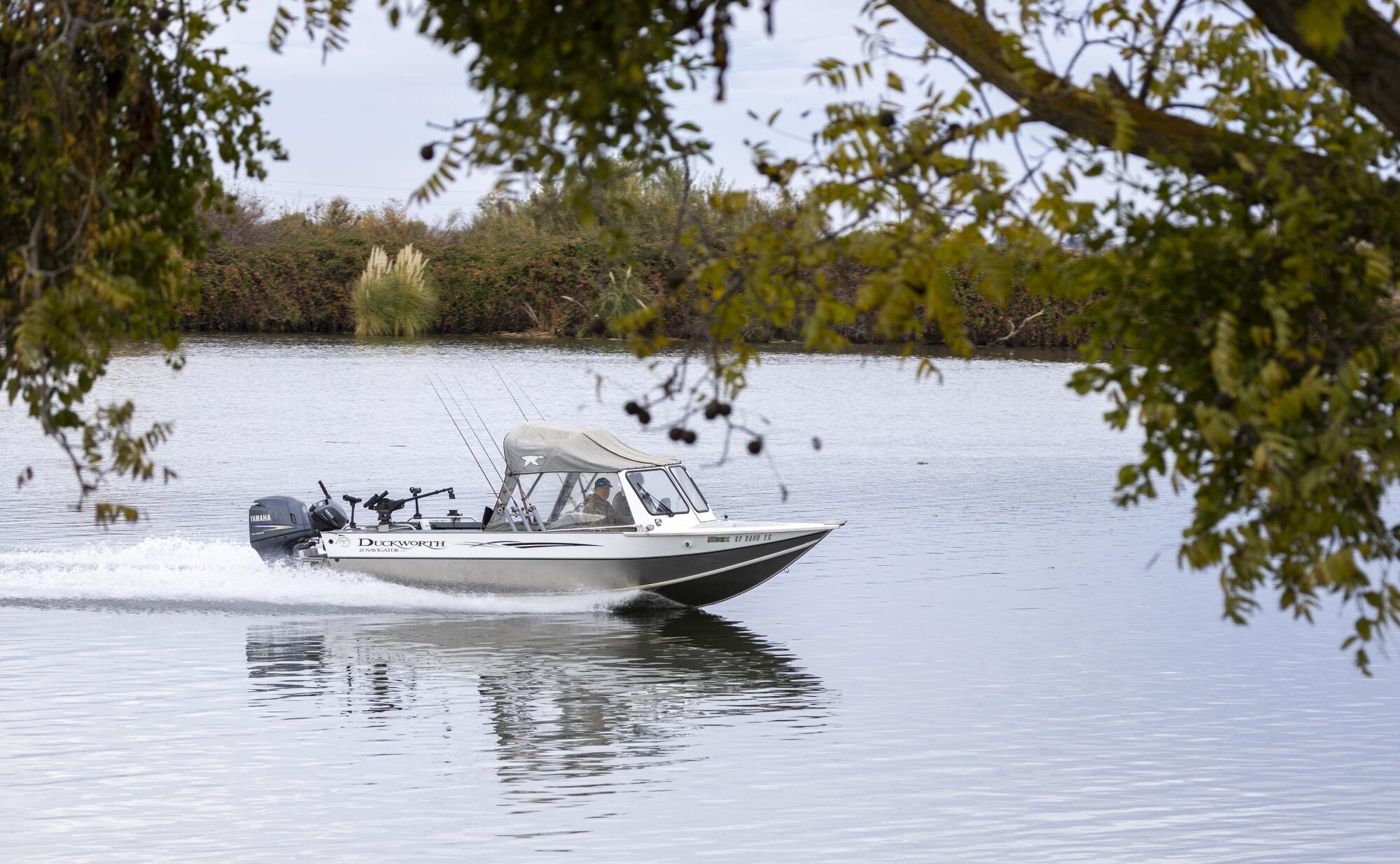
“As a lawyer, I felt pretty comfortable that we were on very solid ground,” Marcus said. “It’s just nice to have validation and vindication that what we did was well founded and correct.”
Marcus said that while providing even more water for fish would be good “if you had a magic wand,” the board and the agency’s staff carried out a fair and comprehensive process that weighed the science and struck a fair balance.
“The job of the board is to balance. And it’s always hard because balance is in the eye of the beholder,” Marcus said.
The board’s 2018 decision was contentious, meeting with strong opposition from managers of water districts. Lawsuits followed. In 2019, Marcus left office when Gov. Gavin Newsom declined to reappoint her.
The court ruling coincides with ongoing heated debates about how water should be managed in the delta to protect threatened and endangered fish at a time when human-caused climate change is putting growing strains on water supplies and ecosystems.
Chinook salmon populations have declined sharply in recent years. Environmental and fishing groups have also pointed to a recent increase in the deaths of threatened steelhead at pumps operated by state and federal managers.
Environmentalists are calling for federal intervention after 4,000 threatened fish were killed by pumps operated by the State Water Project and the Central Valley Project.
In a complaint that is being investigated by the federal Environmental Protection Agency, a group of Native tribes and environmental groups have accused the state water board of discriminatory practices and mismanagement contributing to the delta’s ecological deterioration.
While the state water board considers alternatives for updating water quality standards and flow requirements throughout the delta watershed, the Newsom administration has promoted negotiated “voluntary agreements” — called Agreements to Support Healthy Rivers and Landscapes — in which water agencies pledge to forgo certain amounts of water while also funding projects to improve habitats for fish in the delta.
Marcus, now a researcher at Stanford University, said in a recent report she co-wrote with other experts that while voluntary agreements can be beneficial, it’s also vital that the state have adequate regulatory requirements in place to ensure sufficient water for the environment.
The court decision now gives the board “a great foundation on which to finish the job” by adopting and implementing standards throughout the delta and for other rivers that feed into it, Marcus said.
Implementing the standards along the over-diverted tributaries of the San Joaquin River will mean roughly doubling the amount of water in the rivers for fish during certain times of year, and managing the dams with more precision to limit diversions and protect the ecosystem, she said.
In theory, a voluntary agreement with water suppliers can be effective, as long as there are regulations in place, Marcus said. “But the agreement’s got to be good enough, which includes adding enough water to the system that the fish have a fighting chance.”
Experts are urging California officials to beware of pitfalls as they pursue water management agreements in the Sacramento-San Joaquin River Delta.
Currently, state officials say that more than 80% of flows in the tributaries are regularly diverted in below-average or dry years. But at times, even more water has been diverted. And in some cases, little or no water has been left flowing.
After a stretch of the Merced River ran dry during the severe drought in the summer and early fall of 2022, federal fisheries officials urged the state water board to investigate and take steps to prevent the dewatering of the river.
Eric Oppenheimer, the board’s executive director, said in a January letter to the National Marine Fisheries Service that his agency’s staff have been investigating to “identify factors causing or contributing to the observed dry riverbed conditions,” which he said can include drought, river diversions and groundwater pumping.
He said it’s possible that “the full flow of the river could have been legally diverted when dry conditions were observed,” and that the board is weighing approaches to keep the Merced River flowing to its confluence with the San Joaquin year-round.
The environmental group Friends of the River has called for the state water board to adopt permanent regulations to ensure the Merced River continues flowing during the dry season.
The state water board has set a goal of keeping 40% of the total “unimpaired” flow in the three rivers from February through June. There isn’t a minimum in-stream flow requirement for lower stretches of the tributaries from July through January, but state officials say the new goal provides for supplementing flows during those months to avoid harmful conditions for fish.
Implementing the standards will involve analyzing the water-rights seniority system and allocating reductions. Marcus said that will probably be yet another hard-fought battle, but she hopes the court decision “gives a little more leverage to the voices of action versus the voices of litigation and dissension.”
The Delta Conveyance Project is a key component of Gov. Gavin Newsom’s strategy for a hotter, drier California. Opponents say it will be an ecological disaster.
Managers of water districts that had sued to challenge the state’s plan voiced support for the voluntary approach.
“The lawsuit for us was really about having an open, fair and transparent process,” said Elizabeth Jonasson, a spokesperson for Westlands Water District. “And we believe there is a better way, which is working together, that provides better outcomes, and that’s why we’re supporting the voluntary agreements moving forward.”
Officials at the San Francisco Public Utilities Commission, which supplies 2.7 million residents and thousands of businesses in the Bay Area, expressed disappointment and said they are reviewing the ruling.
“This 2018 decision could significantly impact our water supply with rationing of up to 50% in extended droughts,” said Nancy Hayden Crowley, a spokesperson for the commission. She said the agency is focusing on the proposed Agreements to Support Healthy Rivers and Landscapes as “the best opportunity to balance California’s water resource needs and enhanced environmental stewardship of the Sacramento-San Joaquin Bay Delta.”
Mike Jensen, a spokesperson for the Merced Irrigation District, said the water that is at stake has supported the district’s community for more than a century. He called the state’s plan unfair and “unbalanced” and said the district “will continue to pursue any, and all, legal avenues to protect our disadvantaged communities and their access to water.”

San Francisco Baykeeper and other environmental groups had argued that the state’s plan for increasing river flows, while beneficial for fish, would fail to meet the board’s goals of doubling numbers of salmon and supporting viable fish populations.
Jon Rosenfield, Baykeeper’s science director, noted that the judge didn’t disagree with this view, but determined that the board’s standards would “reasonably protect” fish.
“We believe the board is required to develop a plan that is likely to actually attain the objectives it sets,” Rosenfield said.
He said the current level of diversions has decimated fish populations and is unsustainable. The proposed voluntary agreements would provide much less water for the environment than required under the state board’s plan, Rosenfield said.
With this court ruling, he said, the board “can now act to improve environmental conditions.”
He said the decision also means that agricultural water districts and cities including San Francisco “can now be very certain that they must plan for a future where the water they divert from the San Joaquin and its tributaries will sometimes be limited.”
Toward a more sustainable California
Get Boiling Point, our newsletter exploring climate change, energy and the environment, and become part of the conversation — and the solution.
You may occasionally receive promotional content from the Los Angeles Times.

